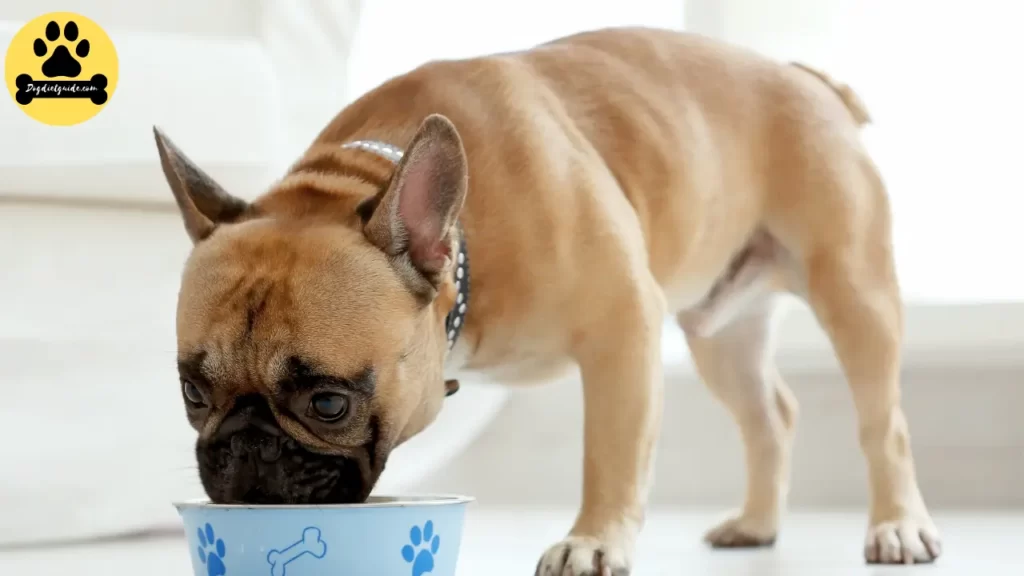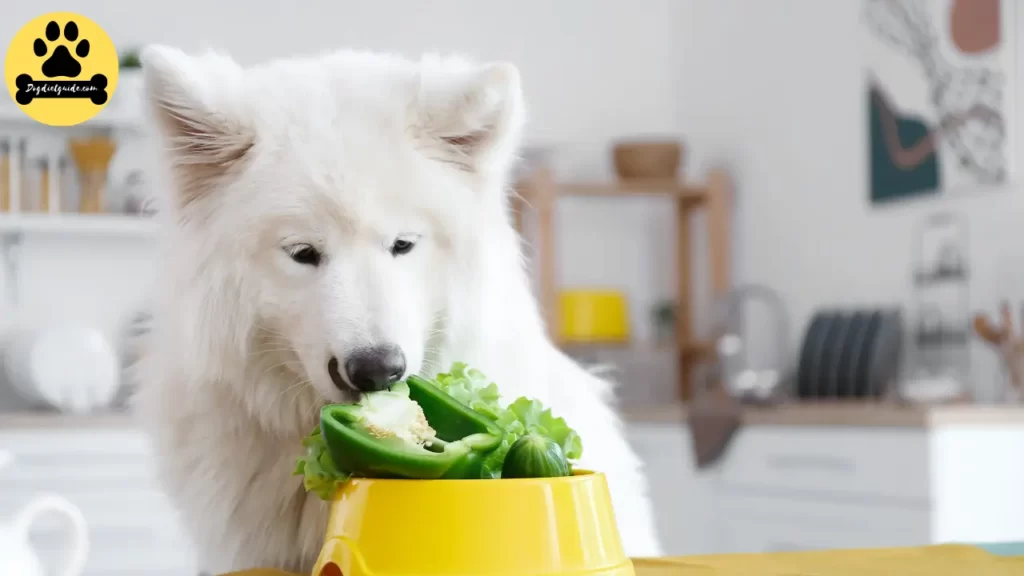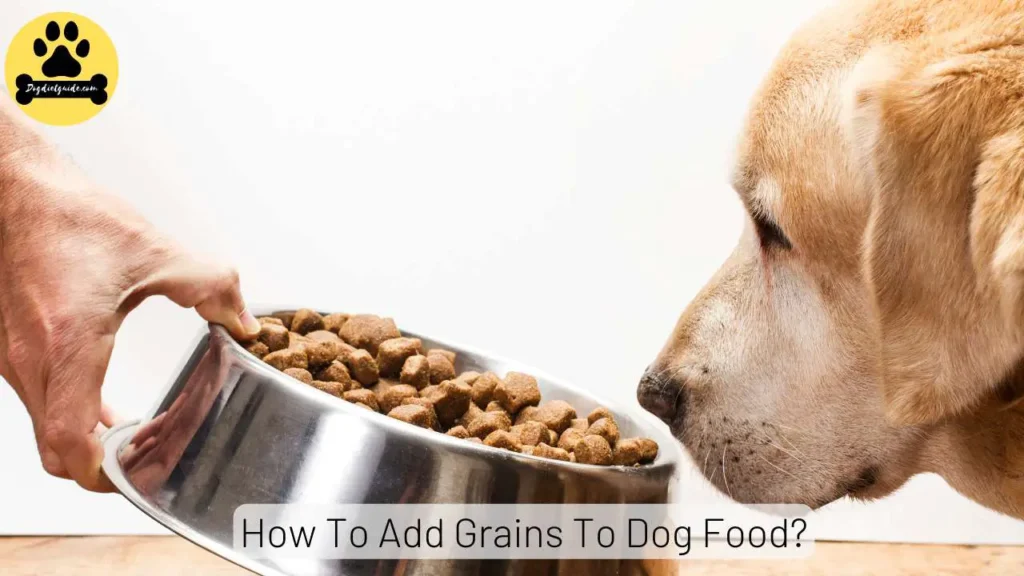Adding grains to your dog’s food can be a beneficial and nutritious way to enhance their diet. Grains provide essential nutrients, fiber, and energy that contribute to your furry friend’s overall health and well-being. However, it’s crucial to do it right to ensure your dog reaps the maximum benefits from this dietary addition. So, how to add grains to dog food?
Add cooked and safe grains to dogs’ regular diet.
Dog nutritionists suggest adding 1 to 2 tablespoons of cooked and safe grains to dogs’ regular diet. As a general rule of thumb, grains should make up around 5% to 10% of a canine’s daily caloric intake. However, before making any changes to your dog’s diet, it’s crucial to consult with your veterinarian.
| Dog Age | Amount of Grains |
|---|---|
| Puppies | 1 Tablespoon |
| Medium Dogs | 1 to 2 Tablespoons |
| Adult Dogs | 1 to 2 Tablespoons |
The Role of Grains in a Dog’s Diet
Grains, such as rice, oats, and barley, are a source of carbohydrates that provide energy for your canine companion. They contain essential nutrients like vitamins, minerals, and fiber, which contribute to their digestive health and overall well-being.
According to FDA grain-free foods can lead your furry friend to certain health issues include DCM.
How To Add Grains To Dog Food?
The proportion of grains you add to your dog’s food depends on their size, age, and activity level. As a general rule of thumb, grains should make up around 5% to 10% of their daily caloric intake.
-
Before adding or making any changes to your dog’s diet, it’s crucial to consult with your veterinarian. They can assess your dog’s health and advise you on the most appropriate grains to add to their food.
-
Choose the right type of grains. Common grains used in canines’ food include rice (white or brown), oats, barley, and quinoa. These grains are generally well-tolerated by most dogs and provide essential nutrients.
-
Grains need to be properly cooked before adding them to your dog’s food. Follow the cooking instructions on the packaging or use a rice cooker to ensure they are fully cooked and soft.
-
After cooking the grains, let them cool to room temperature before incorporating them into your dog’s food. Avoid serving them hot, as this could cause discomfort to your pet.
-
Once the grains have cooled down, mix them with your dog’s regular food. You can add them to commercial dog food or homemade meals. Gradually introduce the grains, starting with a small amount, and observe how your dog reacts.
-
Watch for adverse reactions or signs of allergies, such as vomiting, diarrhea, itching, or skin rashes. If your dog shows negative reactions, stop feeding the grains immediately and consult your vet.
-
Grains should only be part of your pet’s diet. They should not replace the primary source of nutrition, which typically comes from high-quality dog food containing protein, fats, vitamins, and minerals.
-
Some puppies may have specific dietary requirements, such as allergies or sensitivities. If your furry friend has any health issues or special dietary needs, work closely with your vet to determine the best way to include grains in their diet safely.

Remember, not all dogs require grains in their diet. Dogs are omnivores, and some can thrive on grain-free diets as well. The key is to tailor your dog’s diet to their needs and preferences.
Benefits of Adding Grains in Dog Diet
-
Source of Carbohydrates: Provides quick and digestible energy.
-
Fiber Content: Supports digestion and bowel regularity.
-
Nutrient-Rich: Contains vitamins, minerals, and antioxidants.
-
Cost-Effective: Affordable option for pet owners.
-
Weight Management: Helps dogs feel fuller for longer.
-
Gut Health: Supports a healthy gut microbiome.
-
Supports Sensitive Stomachs: Safe alternative for dogs with food allergies.
-
Texture and Taste: Adds variety to the diet.
-
Aids in Nutrient Absorption: Helps maximize nutrient intake.
-
Stable Stool: Maintains consistent and firm stools.
Side Effects
-
Some puppies may be allergic or sensitive to certain grains, leading to skin issues, gastrointestinal problems, or chronic itching.
-
Some dogs may have difficulty digesting, leading to gas, bloating, or diarrhea.
-
If grains are added without proper consideration of the overall diet, it may lead to a nutritional imbalance, particularly if the grains replace essential nutrients from other food sources.
-
Grains can cause spikes in blood sugar levels, which might be a concern for canines with diabetes or pre-existing blood sugar regulation issues.

Nutritional Value of Grains For Dogs
Grains can offer valuable nutritional benefits when incorporated into a dog’s diet. While dogs are primarily carnivores, certain grains can provide essential nutrients, fiber, and energy.
- Grains contribute moderate levels of protein to a dog’s diet, complementing the overall protein intake.
- Grains serve as a significant source of carbohydrates, supplying essential energy for daily activities and maintaining stable blood sugar levels.
- Whole grains, like brown rice and oats, provide valuable dietary fiber, promoting digestion, bowel regularity, and assisting dogs with gastrointestinal issues.
- Grains offer essential B vitamins (B1, B2, B3, B6), folate, and pantothenic acid, supporting metabolic processes and nerve function.
- Grains contain minerals such as iron, magnesium, and phosphorus, crucial for bone health, enzyme function, and oxygen transport in the blood.
- Certain grains, like quinoa, supply omega-3 and omega-6 fatty acids, contributing to coat health, skin condition, and immune system support.
- Whole grains are rich in antioxidants, helping combat oxidative stress and inflammation, promoting overall health and potentially preventing chronic diseases.
- The fiber content in grains promotes a healthy digestive system, preventing constipation and supporting the growth of beneficial gut bacteria.
Monitor for Allergies and Sensitivities
As with any dietary change, monitoring your furry friend for allergies or sensitivities is crucial.
Whole grains are generally well-tolerated by most dogs. Some may have specific sensitivities.
Watch out for signs like itching, digestive issues, or changes in behavior. If your furry friend suspects an allergy, consult your veterinarian promptly.
Balance the Diet with Protein
Whole grains provide essential nutrients. They should not replace the primary source of protein in your dog’s diet. Canines are primarily carnivores; protein is crucial for muscle development and overall health.
Ensure their diet includes high-quality protein sources like meat, fish, and eggs.
Supplement with Vegetables and Fruits
In addition to grains and protein, incorporate a variety of vegetables and fruits into your pet’s diet. These foods are packed with essential vitamins, minerals, and antioxidants, crucial for boosting the immune system and maintaining overall well-being.
Incorporating safe options like carrots, sweet potatoes, apples, and blueberries into their diet can help support their immune system and promote good health.

Always provide your pup with fresh and clean water. Proper hydration is vital for their health, digestion, and organ function. Ensure sufficient water access throughout the day when adding grains to their diet.
Read More From Our Dog Food Guide:
FAQS
How much grain should a dog have per day?
The appropriate amount of grain for a dog varies based on factors like size, age, and activity level. Generally, grains make up around 5% to 10% of a canine’s daily caloric intake., with most of their nutrition coming from high-quality animal proteins. Consult a veterinarian to determine the specific amount of grain suitable for your dog’s needs.
Does grain-free food hurt dogs?
The grain-free trend gained popularity, but it’s essential to note that not all grain-free foods are harmful. However, recent research suggests a potential link between certain grain-free diets and some dogs’ dilated cardiomyopathy (DCM). Grain-free diets often substitute grains with other ingredients that may not provide the necessary nutrients.
What grains do dogs need for heart health?
Grains alone are not essential for a dog’s heart health, as dogs can thrive on grain-free diets too. However, certain grains can contribute to heart health due to their nutritional properties. For example, whole grains like brown rice and oats contain nutrients like fiber, antioxidants, and essential fatty acids that can support heart function in dogs.
Can you mix grain and grain-free dog food?
Mixing grain and grain-free dog food is generally safe, but it’s essential to do so thoughtfully. Abrupt diet changes can upset a dog’s stomach, so a gradual transition is advised. Mixing both types can offer a compromise, providing some grains without eliminating the benefits of a grain-free diet.
Final Thoughts: How To Add Grains To Dog Food?
Adding grains to your dog’s diet can be a valuable addition to their nutrition, but it’s essential to approach it with care and attention. Choose the right type of grains, cook them thoroughly, and introduce them gradually.
Remember to balance the diet with protein, vegetables, and fruits, and monitor your dog’s response to the dietary change.
With proper care and a balanced approach, your dog can enjoy the benefits of grains as part of their healthy and nutritious diet.

Resources:
https://www.akc.org/expert-advice/nutrition/grain-free-dog-food-bad-or-good/




![Can Dogs Eat Blood? 7 Side Effects [Expert Opinion]](https://petskor.com/wp-content/uploads/2022/04/Webp.net-resizeimage-12.jpg)
